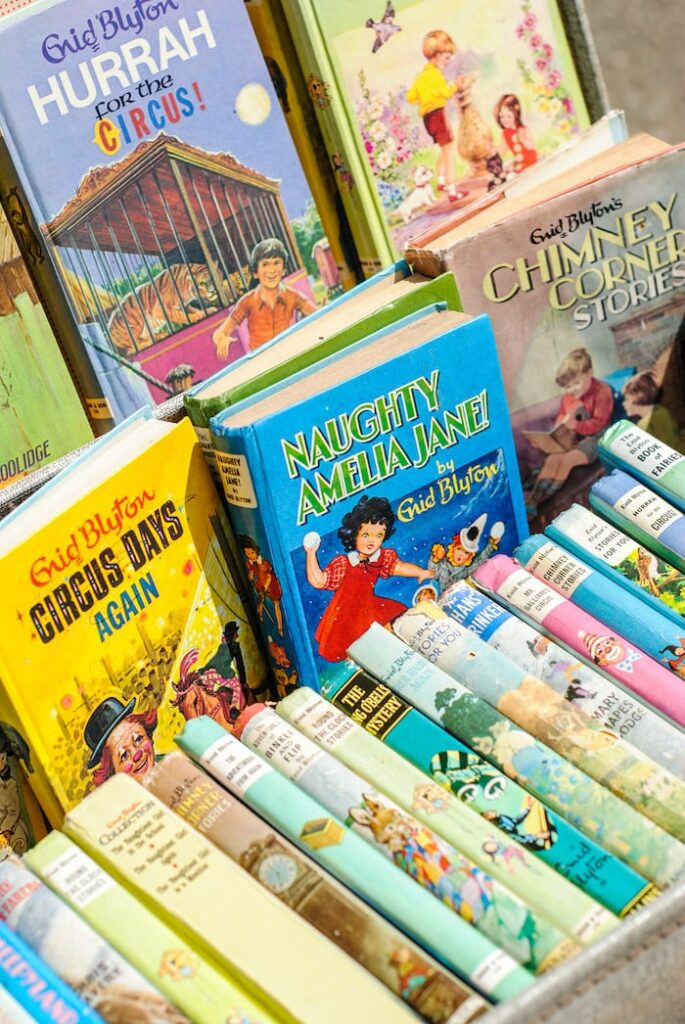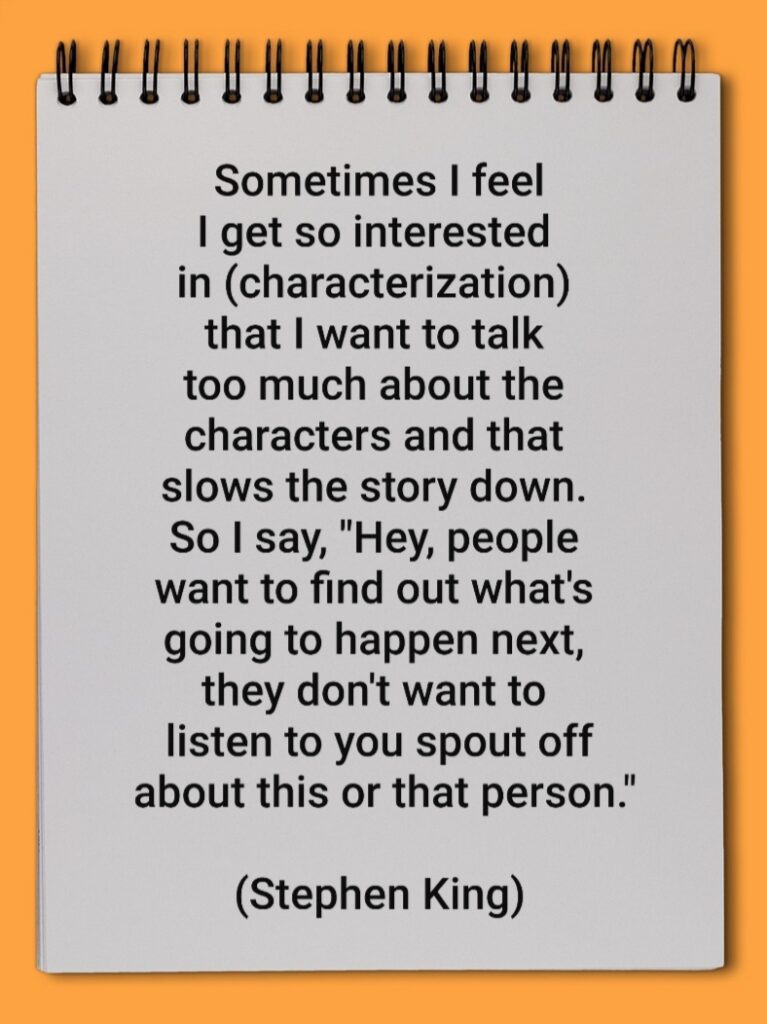ELEMENTS THAT MAKE UP A STORY (A Focus on Fiction)
Introduction:
This is the first of a three-part series on fictional writing. This segment explains what fiction is, its different forms and the components that a fictional story (like other stories) is built from. The second part looks at Guidelines for Writing Effective Fiction while the last examines Guidelines for Writing Book Reviews on Works of Fiction.
What Is Fiction?
Fiction is a form of creative writing in which the author draws on his imagination to craft a story. Although a fictional work may incorporate actual people and events, the bulk of the work derives from the author’s mind.
The main goal of fictional writing, I feel, is primarily to entertain the readers. It can also educate and persuade as explained in Part 2 of this series.
Fiction comes in long and short forms – novels and short stories.
Novels also come in short and long forms. A novella (short form), also called novelette, may range from 40,000 to above 60,000 words. A full fictional novel, on the other hand, is expected to range from 70,000 to 100,000 words. The number of pages may differ as it depends on font type, font size and how the pages were formatted.
Short stories, as their name indicates, are more concise than novels. A short story is a complete fictional story that is less lengthy than a novel.
There is no consensus on the length of a short story. Some say it can vary from 1,500 to 20,000 words while others say it should not exceed 7,500 or 10,000 words. We will, therefore, choose the upper limit of 20,000 words. As for the lower limit, one can write a piece of flash fiction that is shorter than 1,500 words that still qualifies as a short story as it is a complete story.
“The Looming Breakup” and “Loyalty Wins” are examples of flash fiction (426 and 383 words respectively) that are full stories.
Fiction can also be classified according to genres which are based on the subjects of the stories and writing approach used. Such genres include science, historical, mystery and children’s fiction.

(Image: Children’s fiction by Enid Blyton)
What Makes A Complete Story? (Elements that make up a story)
Different lists of what makes a complete story are available in the literature. But we consider six of the often mentioned elements to be the most essential ones. They are: plot, setting, characters, point of view, theme and conflict.
Plot: This element gives the ‘what’ and ‘how’ of the story – what happened and how it happened. It contains the exposition (background), rising action, climax, falling action and resolution or denouement.
However, a writer can choose to omit the last element above and end the story at the climax. Or he can answer some but not all questions raised by the story.
Such an ending is called an open ending and it gives room for the continuation of the story in a sequel. It can also be called a cliff hanger when the story ends at the height of the climax, giving the reader no clue as to whether the protagonist won or lost the battle he was in. Readers often complain about such endings. But I use them often to leave a more lasting impression on the readers with respect to the message I seek to convey. Also, I use them to get the readers pondering on possible endings and to allow for future development of the plot if I wish to, as earlier stated.
The stories, “Going ‘Home’ To Gerald” and “Please Mama, Wait For Me,” are examples of fiction without resolution that shocked readers and captured their imagination.
Setting: This concerns the time and place of the story.
“Searching For Love” is a story set in the contemporary era in the Big Apple.
Characters: These are the people in the story who drive the plot. Each story usually has a major character, the protagonist, whom the readers typically identify with. Also, to heat up the drama in the story, there is often an antagonist who is against the major character and whom the readers will probably hate. The parallels to these characters in movies are the heroes and villains, particularly in actioners. But that does not mean that every character in a story must be for or against the protagonist. Some may be people that play neutral roles in their daily lives.
Making the characters relatable, especially the protagonists, enables readers to easily identify with them. E.g. a struggling father, a small business owner, a philanthropist, a childless woman.

Someone just asked me if the protagonist must be good and flawless or he can be evil. The protagonist is the major character the plot revolves around. Yes, he can be evil but to make people identify with him, the writer often includes a backstory explaining his reasons for acting the way he does. It’s just easier though to make readers love and root for main characters that are on the side of good.
Furthermore, since no one is perfect in real life, writers often add a few flaws to protagonists that are good and soften the character of the villain in one or more ways.
A good illustration of protagonists and antagonists can be seen in spy thrillers like the James Bond series by Ian Fleming.
The total number of characters in a story should depend on how extensive the story is, but it’s always advisable to keep the number as low as is necessary to tell the story without making it unwieldy.
Point of View (POV): This refers to the case or pronoun adopted by the narrator of the story. Use of the first person pronoun, “I/We” indicates that the narrator is directly involved in the events narrated while adoption of the third person pronouns, “He/She/They” shows that the narrator is reporting what happened to others. Note that by narrator, I mean the character in the story telling it, not the author, particularly when the first person is used.
The usual cases used in fictional writing are first and third person and the third person can be omniscient or limited. The former reveals even the thoughts of the characters and other hidden things while the latter is constrained to what is observable.
The stories, “Help, My Wife Is A Guy!” and “Home Truth,” were written in the first and third person cases respectively.
Theme: This is the idea or message that the story conveys. This can be captured in one or more words or a phrase. For instance, “Going ‘Home’ To Gerald” is about cohabitation whereas “Please, Mama, Wait For Me” explores the issues of forgiveness, sibling rivalry and parental favouritism. Furthermore, “Help, My Wife Is A Guy” is about gender roles while “Home Truth” dwells on motivation for giving.

Conflict: This refers to what the protagonist is struggling with. This can be categorised as:
• Conflict with self: See “A Tough Choice.”
• Conflict with another character: See “Expensive Joke.”
• Conflict with society: e.g. fighting corruption, oppressive norms. See “Prejudice.”
• Conflict with nature: e.g. a sickness, a natural disaster. See “A Love To Count On.”
Conclusion:
This first part of this series on fictional writing has presented what fiction is and the elements that it is built from.
The second part will explain how to recognise and write excellent fiction. Meanwhile, I welcome your feedback and questions in the Comments below. God bless you!
References
6 Elements of Good Fiction Writing. (2021).
The 7 Essential Elements of A Story
What Are the Key Elements of a Story?
You may also like the following related posts:


I have a question concerning characterization. Correct me if I’m wrong; I’ve always known the protagonist to be the centre of the attraction in a story and the antagonist to be against the protagonist. Let’s say in a situation where the main character is a drug lord and the story is centred around him, then a particular detective is out against him, can the drug lord be called the protagonist and the detective the antagonist.
Secondly, must the protagonist is a story always be good, even with little tragic flaws and the antagonist always bad with a spark of light in his/her heart?
The protagonist is the major person the plot revolves around. Yes, he can be evil but to make people identify with him, the writer often includes a backstory explaining his reasons for acting the way he does. It’s just easier though to make readers love main characters that are on the side of good and root for them.
Since no one is perfect in real life, writers often add some flaws to protagonists that are generally good and soften the character of the villain in one way or more ways.
Thank you very much ma. This question has only been on my mind for some time now.
You’re welcome!
Thank you so much ma ❣️
You have given us links to stories written in the first and third point of view. Please ma, is it possible to get a story written in the second pov?
Very hard. I never use it myself.
Alright ma.
Chimamanda Adichie made use of the second-person point of view in her story “The Thing Around Your Neck” and that is the only one I have seen.
Thank you so much ma’am for this concise work.
Oh, I was worried it was long. Thank you!
Thank you for this piece, ma. A question ma. When dealing with the plot summary of a fictional book or text, do we necessarily need to look at characterization also?
The major characters may be mentioned in telling the story but a deep dive into characterisation is uncalled for in such a summary.
However, if you’re a student of literature, do what your lecturer tells you.
Okay.
Noted ma.
Thank you.
It’s an enlightening piece ma. Your writings took me back to Literature and I must say I learnt new things.
Glad to hear that.
Have a blessed week! 🙏
Thank you so much ma, I really learnt a lot.
This write up really helped me, I always had problem with differentiating first person pronoun from third person pronoun, but reading this has helped me understand. Thank you ma 😊😊
Delighted! Glory to God!
These elements are truly good make up of a fiction ,thank you MA for this educative piece.
But Ma, I don’t really understand this under POV Where the former reveals even the thoughts of the characters and other hidden things while the latter is constrained yo what is observable
Perhaps, you need to check the meaning of omniscience and read some fiction to see how the writer tells you not only what he sees on the outside but what the characters are thinking too.
You have mentioned the important elements that make up a story but I have a question, ma.
Ma, is it necessary or possible to just focus one’s story on the protagonist and antagonist alone, thereby not paying attention to the other characters who are neutral and also play a part in the story.
Why would you do that? If they have roles to play in the story and you ignore them, then your story will have holes and fuzzy areas.
Ok ma
Thanks for the clarification ma🙏🙏
I have truly learnt
Praise God!
The lecture was most educative. I especially appreciate the expositions on the categories of conflict. May I add that I loved the fact that James Bond was used to exemplify protagonism and antagonism in characterization? It was a beautiful touch to the lesson. The example is relatable, although I noticed that in the literary world of today, stories exist where it seems like there aren’t any antagonists. Some writers just use a conflict to spice up the story. I don’t know, ma, if the characters that oppose the protagonist in the conflicts can still be called antagonists. I mean, we know antagonists to be sworn opponents of the hero, the sworn enemies of the James Bond. What of those characters that stand for the protagonist but due to a flaw, they seem to oppose the protagonist? For example, a mother wants her son to go to college but he prefers to rebel and roams the streets with his friends. Can you call the mother the antagonist especially since in this instance, the son is the protagonist?
Don’t overthink the matter. Someone that opposes another is an antagonist regardless of their reasons for doing so.
Alright. Thank you ma.
Thanks for this piece, ma.
“The former reveals even the thoughts of the characters and other hidden things while the latter is constrained to what is observable.”
This just affirmed something I have been deliberating on after reading a story(suicide notes). It was written in the first person POV. It gave a detailed explanation on the thoughts of the protagonist: his ideology, convictions and perceptions; his bordered, unbridled mind, etc. It gave me great insight into the mind of the character and helped me understand the reasons for his actions. I couldn’t fault him for his actions but after reading the book and I was contemplating on it, I knew that if it was written in the third person POV, my conclusion would have taken a different path.
Thank you ma for this educative piece and explaining in details. I’ve have understood more about the protagonist and antagonist.
You just gave me an advanced version of what I learnt in Senior Secondary School ma. This was really helpful, thank you ma.
And I’m just learning that a novel is bigger than a novella 😂😂…Thank you Ma Edith!😊
Thank you ma for this
But my question is this, is it must that the protagonist must win in a work
No, it isn’t. But it’s usual and it gives satisfaction to readers if the protagonist wins. It gives us hope in this unjust world.
Some writers choose to stretch out the struggle to create sequels.
Thanks Ma.
This piece of work has actually widened my horizon on fictional work, I have understood the various elements that makes up a solid story. Well detailed I must say.
I do have a question regarding the use of open endings and cliffhangers in fiction. While they can indeed leave a lasting impact and stimulate readers’ imaginations, do you think there’s a fine line between using them effectively and potentially frustrating or disappointing readers who may desire more closure? How can authors strike the right balance in using open endings or cliffhangers in their storytelling?
You can encourage readers to imagine different scenarios as the endings or write sequels.
An alternative is to attach a brief postscript that gives a glimpse into later events.
Thanks a lot ma but concerning this open ended style I need more info please
No, you don’t. What you need is to read that section again. You can also read my stories, “Please, Mama, Wait For Me!” and “Searchibg For Love,” on this blog to see examples of open endings.
About what makes a complete story that includes plot,setting,characters,point of view,theme and conflict.
I think some elements are supposed to be added like “the title” and maybe “suspension”,to make the reader have the urge to read more about a story.
😃😃😃
The title is not part of the body but it’s a necessary appendage. Suspense is subsumed under plot.
I like how you emphasized that both protagonists and antagonists can have gray areas because it gives characters more complexity and makes them more sympathetic. The discussion of cliffhangers and open endings provides important context for understanding narrative devices and how they affect readers.
This has enlightened me more and even made me remember my secondary school literature lessons. ….indeed no knowledge is a waste
Thank you ma for this post ❤️
This was enlightening, thanks for always taking your time to explain all this to us
characters are the heart of any story, and their experiences and emotions connect readers to the narrative on a deeply personal level. an educative article and it refreshed my memory of it.
I like the fact that open ended books always leave you guessing what actually happened.
I really appreciate that this post is very easy to read and comprehend. Well-done ma’am.
One thing I love about your posts is the usage of pictures and write-ups for easy understanding. Most of these social media bloggers don’t use it.
Thank you ma!
It was really a good read and broadened my understanding of the various elements that make up a news story.
Thank you ma for the way you explained everything in this article, before now I always get confuse when ever I hear the word fiction and non fiction but this article has cleared my confusion.
Ma,must one write from his imagination, even when you are writing something about experience or a biography of someone, secondly, is non-fiction a type of fictional writing?
You are confusing fiction (a story from someone’s imagination) with nonfiction (a real story) like the biography you spoke about.
Growing up, I always loved to read Enid Blyton’s books. One good point to note is that she always had cliffhangers adding to the fact that her plot, characters, themes were on point. In most cases her settings were magical and her point of view always came from a narrator’s perspective. Although Enid Blyton’s books are mostly short stories are centered on children’s fiction, they were a delight to look forward to, even till now. this goes on to say that a good fiction work must do justice to the elements that makes it up.